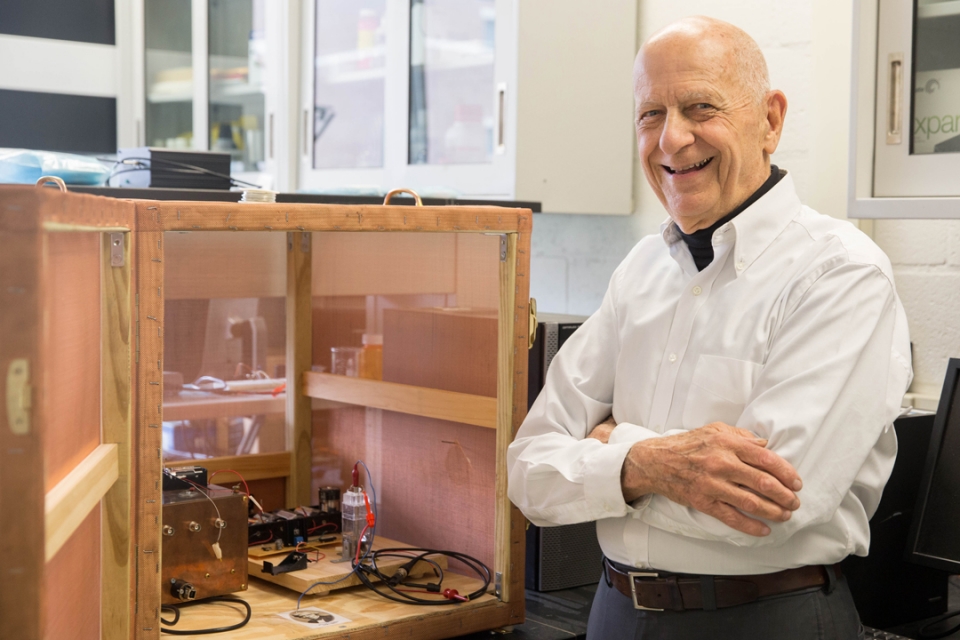Research Professor David Nagel has been performing and managing research projects for over 55 years. Now, he is delighted to be pursuing two approaches to clean energy at GWU by leading different research teams that share the same goal of developing clean energy sources. These are much needed in a world with increasing population and increasing per capita use of energy, which is now burdened by the effects of the massive use of fossil fuels. The nature of the energy sources being advanced by the two GWU groups is very different. One is more evolutionary; it involves making much more efficient and affordable solar cells, a major challenge in a field that is already well established. The other deals with a potentially revolutionary new source of nuclear energy, which is still in the research stage and not yet commercialized.
The work on solar cells is supported by the Naval Research Laboratory (NRL). It involves three full time GWU research scientists, who work at the NRL because of their world-class facilities. The team performs all phases of solar cell work from concept development through numerical simulations to fabrication or acquisition, performance and radiation testing, and integration into systems. Applications include systems for use in space, on land and at sea. One of the current thrusts is to make panels with small lenses that will concentrate sunlight onto six-junction cells, which are only 200 micrometers square. Those compound semiconductor cells will be backed by a conventional silicon solar cell to harvest unfocused light and increase the overall efficiency. The GWU team at the NRL is also working with companies to insure commercialization of their new devices.
The second group led by Professor Nagel is doing research on Lattice Enabled (or Low Energy) Nuclear Reactions (LENR) in a laboratory on campus in Tompkins Hall. That field, which started suddenly in 1989, was initially and poorly known as “Cold Fusion”. It remains controversial to this day. But, thousands of experiments since 1989 have shown that it is possible to release nuclear energies, measured in millions of electron volts, by using chemical energies of a few electron volts. The large difference makes it possible to realize high energy gains. That is, the output of thermal energy can be many times the electrical energy needed to stimulate LENR. Gains as high as 800 have been reported, but they have not been verified. There is solid evidence for LENR energy gains of 25. If realized in commercial systems, such gains could result in electricity prices that are less than 20% of current rates.
Many experiments in laboratories around the globe have shown that, besides the remarkable gains, energy from LENR has some very desirable features. No dangerous radiation or greenhouse gases are produced during the reactions. And, in contrast to current nuclear fission reactors, no residual radioactive materials are generated by LENR. Small distributed thermal and electrical generators based on LENR are envisioned. New companies in six countries are now working to commercialize such systems, even though the basic mechanism causing LENR is still not understood. The GWU LENR team seeks to advance the reproducibility, control and understanding of LENR. It includes Research Professor Ashraf Imam from the Department of Mechanical and Aerospace Engineering, and four students from that Department and the Department of Electrical and Computer Engineering.
Professor Nagel served 30 years as a Naval Officer and 36 years as a Physicist and Manager at the NRL (concurrent, not consecutive careers!). Then, he joined the Department of Electrical and Computer Engineering in 1998. He founded a consulting company for LENR in 2011, and co-founded an Industrial Association for LENR in 2015 (lenria.org).


